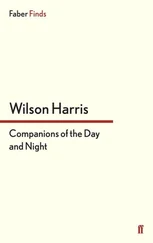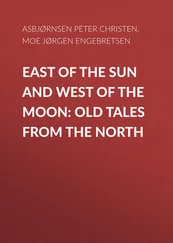Appendix: List of Groups of non-Jews in the Near East
For the Hellenistic and Roman periods Josephus’s references to nations or inhabitants of a region or city include the Adiabenes ( BJ 1.6, 4.567, 5.147, etc.), the Albani in the Caucasus ( AJ 18.97), the Arabs ( BJ 1.6, 90, etc.), the Antiochenes ( AJ 14.323; also above), inhabitants of Arad (Phoenicia, AJ 14.323), Armenians ( BJ 1.116; AJ 1.92, etc.), Auranites (inhabitants of the Hauran; BJ 2.421), the Babylonians ( BJ 1.6 2.520, etc.), the Bataneans ( BJ 2.421; AJ 18.106), the Beruthians ( BJ 2.67, 506, etc.), the inhabitants of Borsippa (in Babylonia; Ap 1.152), the inhabitants of the Bosporus ( BJ 2.366), the Cappadocians ( BJ 1.446, 2.114, etc.), the Cilicians ( BJ 1.88, 2.368; AJ 13.374), the Colchi (east/southeast of the Black Sea; BJ 2.366; Ap 1.168–170); the Commagenes ( AJ 18.140; see also Chapter 19), the Cordyeans (Armenia; AJ 1.93), the Damascenes ( BJ 1.103, 398, 2.559, etc.), the Dahae (Iranian people; AJ 18.100, 20.91), the Elamites ( AJ 1.143), the Gadarenes (east of the Sea of Galilee; BJ 1.116, 2.478, etc.), the Heniochi (east of the Black Sea; BJ 2.366), the Ituraeans ( AJ 13.318, 319; 15.185; see also Chapter 21), the Medes ( BJ 1.13, 50, 62, etc.), the Nabataeans ( BJ 1.178; AJ 12.335, etc.), the Parthians ( BJ 1.6; 175, etc.), the Phoenicians ( BJ 2.380; AJ 8.142, etc.; see also Chapter 20), the Sacae (Iranian people; AJ 18.100, 20.91), the Sarmates (Scythian tribe; BJ 7.90, 92), the Scythians ( BJ 7.90, 244, etc.), the Sidonians ( BJ 1.249, 539, etc.), the Syrians ( BJ 1.88, 205, etc.), the Tauri ( BJ 2.366), the Trachonites ( BJ 2.58, 421, etc.), the Trallians ( AJ 14.242), the inhabitants of Tripolis (Syria; AJ 14.39), and the Tyrians ( BJ 1.231, 238, etc.).
Bilde 1988 and Rajak 2002 offer excellent and readable introductions to Josephus and his four works and Chapman and Rodgers 2016 includes detailed discussions of many topics connected with Josephus and the content and reception of his works. For the history of the first Jewish revolt against Rome (66–73/74 CE), which is the main topic of Josephus’s War , see especially the articles in Popovic 2011 and the excellent fresh interpretation of the events in Mason 2016a. Goodman 1994, Mason 2003b, 2005, Price 2005, Tuval 2013, and Den Hollander 2014 discuss the importance of Josephus’s Roman context for his audience, and his aims. For Josephus’s handling of geographic information, see especially Shahar 2004 and Van Henten and Huitink 2012. An overall study of Diaspora Judaism as presented by Josephus is still missing; see for Babylonia and the Parthian Empire Neusner 1969 and Goodblatt 2012 and for the legal position of the Jews in the eastern part of the Roman Empire Pucci Ben Zeev 1998. Hackl et al. 2003 offer useful translations of and brief comments on Josephus’s passages about the Nabataeans.
Alberto Rigolio
The present chapter offers an overview of the Syriac sources available for the study of the Hellenistic and Roman Near East. The criterion for inclusion is, quite simply, the use of the Syriac language; the material is therefore arranged by type and is organized into “inscriptions and mosaics,” “coins,” “parchments and papyri,” “historiography,” and “other literature.”
Syriac is a dialect of Aramaic originally spoken in Edessa (modern Urfa, in Turkey) and its surrounding region, Osrhoene, which is enclosed by the Euphrates on the West and by one of its tributaries, the Khabur, on the East. After almost two centuries of Seleucid rule, Osrhoene became independent in 133 BCE, when a dynasty of “lords” (and later “kings”) took control of it and held this region for more than three centuries until its eventual annexation to the Roman Empire ( Chapter 27). It was in the context of this independent kingdom of Edessa that the local dialect of Aramaic was first put into writing, and, for this purpose, a characteristic Syriac script was developed, drawing from a late version of the Achaemenid Aramaic script. This enterprise responded to the administrative and cultural needs of the kingdom of Edessa, and it may therefore be understood as part of a broader effort to elevate non-Greek identity; the Syriac record, however, offers abundant evidence for the study of the fertile and complex interactions between Greco-Roman and Near Eastern cultures. The use of Syriac was not limited to epigraphic and documentary settings: this language was also employed in a flourishing literature that continued to be produced both within and outside Osrhoene after Osrhoene was integrated into the Roman Empire and its dynasty of rulers permanently overthrown in the middle of the third century CE. Syriac literature, which includes a particularly rich strand of historiographical writing, continued to flourish for more than a millennium, and offers rich and fascinating material for the study of the Hellenistic and Roman Near East.
Like other Aramaic dialects in the Near East, such as Palmyrene, Nabataean, and Hatrene, Syriac was commonly employed in inscriptions and official documents, which were produced in the kingdom of Edessa. About one hundred and fifty such inscriptions and documents survive, the vast majority of which are chance finds; the continuous settlement of Edessa up to modern times has precluded systematic excavations, and many more inscriptions are certainly still to be recovered. Most of the known inscriptions are helpfully collected, published, and translated in one volume (Drijvers and Healey 1999; its numeration is followed here), with recent additions of new finds (notably Healey 2006; Önal 2017: 132–141); they all come from Osrhoene, with the only known exception being three short graffiti on sherds found in Krefeld, in Germany, that may suggest a link with merchants from Edessa (Luther 2009). Several inscriptions are on mosaics and are often accompanied by a rich iconography; they demonstrate a link to so-called Parthian art (for which see Chapter 12), but their technique and geometric ornamentation are Roman ( Chapter 16). The language of these inscriptions is known as “Old Syriac,” thus differentiating it from “Classical Syriac,” the language used in the manuscripts and employed for literature, from which it differs in some important orthographic and morphologic features (most notably in the rendering of the proto-Semitic *ś and the use of different prefixes to mark the masculine third person singular imperfect). Scholars are still divided on the origins of the linguistic peculiarities of Classical Syriac, and possible explanations include a chronological development of Old Syriac or a reflection of a different register or variety in the spoken language (Van Rompay 1994; Healey 2008a, 2017; Gzella 2019).
A considerable group of Old Syriac inscriptions are funerary in nature and mark the burial sites of members of the Edessene elites during the first three centuries CE. A representative of this material is the earliest surviving dated inscription, which was likely put up in the year 6 CE to mark the tomb of the governor of Birtha (now Birecik), a strategically placed settlement on the Euphrates (As 55). As frequently occurs in Old Syriac inscriptions, the text is reported in the first person by the dedicatee; his name was Zarbiyan and, in the inscription, he declares: “I made this tomb for myself and for Ḥalwiya, lady of my household, and for my children.” References to the family of the deceased are a common feature of Syriac funerary inscriptions, which often include portraits of the deceased together with family members, either in stone relief or in mosaic. Family ties are emphasized in these inscriptions, but especially important was any eventual connection of the deceased with members of the royal family. In the inscription of Zarbiyan, the deceased introduces himself not just as the “governor of Birtha,” but also as the “tutor of ‘Awidallat son of Ma‘nu son of Ma‘nu,” who can arguably be identified as the son of the king of Edessa Ma‘nu IV (d. 13 CE). Zarbiyan’s role of “tutor” ( mrabbyōnō ) is probably best understood as a special guardianship position that he had for a member of the royal family; this role may have equivalents in the Hatrene Aramaic mrabbyana , as is attested in a dedicatory inscription put up in the first half of the third century (H203:2; Vattioni 1981; Aggoula 1991; Beyer 1998), and in the Nabataean cognate rbw , used for the tutor of a third-century king Gadimat, “king of the Thanouēnoi,” in the context of a Greek bilingual inscription in which the word is translated as tropheus in Greek ( RES 1097). According to Millar, this title indicates the extension of Hellenistic courtly culture into these kingdoms (Sartre 1979; Millar 1993: 431–434).
Читать дальше












